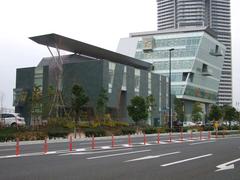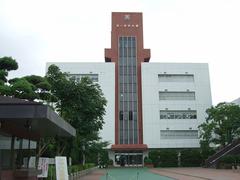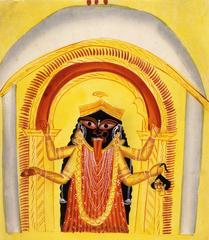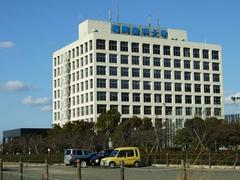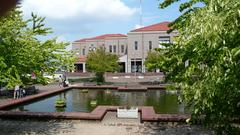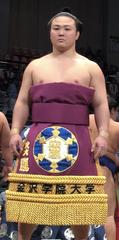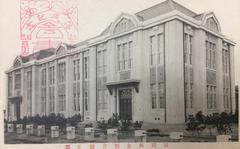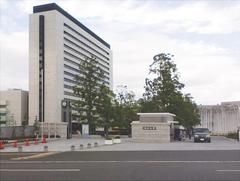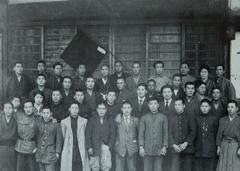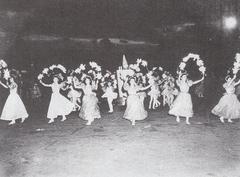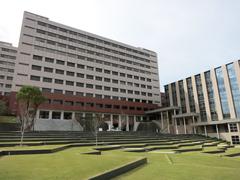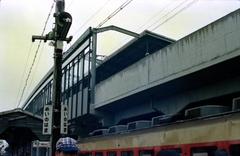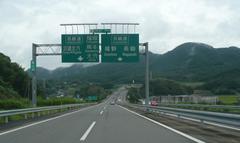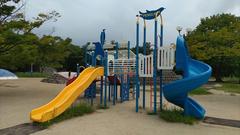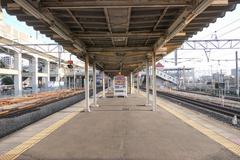
Hakozaki Shrine Visiting Hours, Tickets, and Fukuoka Historical Sites Guide
Date: 14/06/2025
Introduction to Hakozaki Shrine
Nestled in Fukuoka’s Higashi Ward, Hakozaki Shrine (Hakozakigu) stands as a testament to Japan’s spiritual heritage and historical resilience. Founded in the early 10th century, the shrine honors Hachiman, the Shinto god of war and divine protector of Japan, and is believed to enshrine the deified spirit of Emperor Ojin. Its origin story, involving the burial of Emperor Ojin’s placenta in a wooden box marked by the symbolic “Box Pine,” bestows the shrine with its name and deep cultural importance. Hakozaki Shrine is also renowned for its role during the Mongol invasions of the 13th century, where its destruction and subsequent rebuilding became emblematic of Japan’s endurance (Fukuoka Now; official Hakozaki Shrine website).
Today, Hakozaki Shrine is not only a place of worship but also a vibrant cultural hub, hosting major festivals such as the Tamaseseri in January and the Hojoya Festival in September. This guide offers comprehensive information on Hakozaki Shrine’s visiting hours, ticket policies, festivals, architectural highlights, and nearby attractions, ensuring you make the most of your visit (idbackpacker.com; Japan Travel).
Table of Contents
- Introduction
- Historical Background
- Architectural Features and Sacred Spaces
- Religious and Cultural Importance
- Festivals and Annual Events
- Visitor Information: Hours, Tickets, Accessibility
- Access and Nearby Attractions
- Visuals and Media
- Frequently Asked Questions (FAQ)
- Conclusion
Historical Background
Origins and Development
Established in 923 CE, Hakozaki Shrine is one of Japan’s preeminent Hachiman shrines (idbackpacker.com). The unique “box burial” of Emperor Ojin’s placenta, marked by the Box Pine, is central to the shrine’s identity. The shrine’s significance was further solidified during the Mongol invasions, particularly in 1274 when it was destroyed by fire. Emperor Kameyama’s support for reconstruction and his dedicatory plaque—inscribed with the phrase “The surrender of the enemy nation”—commemorate the legendary “divine wind” (kamikaze) that repelled the Mongol fleet (Fukuoka Now). This narrative has become a cornerstone of the shrine’s enduring spiritual and historical legacy.
Architectural Features and Sacred Spaces
Hakozaki Shrine’s architectural grandeur is best exemplified by its imposing Sakura-mon gate. This tower gate, adorned with imperial calligraphy and gold-framed inscriptions, welcomes visitors into the sacred precincts. The main hall (honden) and worship hall (haiden) are constructed in traditional Shinto style, with the Sakura-mon’s expansive roof creating a dramatic entryway (Fukuoka Now).
Other sacred features include:
- Wakide-ishi: A stone believed to impart good luck.
- Box Pine: The living symbol of the shrine’s founding myth.
- Imperial Sculpture: A six-meter-high wooden statue of Emperor Daijo Kameyama.
- Seasonal Gardens: Beautifully maintained, with flowers blooming year-round.
Religious and Cultural Importance
Hakozaki Shrine is a major center for Hachiman worship, alongside Usa Jingu in Oita and Iwashimizu Hachimangu in Kyoto (Fukuoka Now). Historically, samurai and military leaders prayed here for victory, reflecting the shrine’s martial associations. Today, the shrine’s daily rituals, conducted by priests in traditional attire, offer visitors an authentic experience of Shinto practice (idbackpacker.com).
Festivals and Annual Events
Tamaseseri Festival (January 3)
A thrilling contest between teams of farmers and fishermen, each vying to seize an eight-kilogram wooden ball. The winning team’s success is believed to foretell prosperity in the coming year. Participants, clad in loincloths, are doused with cold water—a dramatic display of endurance and communal spirit (idbackpacker.com; Japan Travel).
Hojoya Festival (September 12–18)
One of Fukuoka’s largest festivals, Hojoya attracts more than a million visitors over a week. The festival, rooted in compassion for all living things, features hundreds of stalls, processions, and illuminated grounds (idbackpacker.com; Fukuoka Now; Crossroad Fukuoka).
Hatsumode (New Year’s Celebrations)
The shrine is a key site for Hatsumode, the first shrine visit of the year, drawing crowds seeking blessings for health and prosperity. The grounds come alive with food stalls, omikuji (fortune slips), and festive rituals (Go Fukuoka).
Seasonal Highlights
- Cherry Blossoms: Peak season in late March to early April.
- Autumn Foliage: Maple leaves create a picturesque setting.
- Other Rituals: Regular purification rites, blessings for newborns, and ceremonies for business or academic success.
Visitor Information: Hours, Tickets, and Accessibility
- Visiting Hours: 6:00 AM – 6:00 PM (April–September), 6:30 AM – 5:00 PM (October–March). The shrine office (for omamori and goshuin) is open 9:00 AM – 4:30 PM (gofukuoka.jp).
- Admission: Free entry to shrine grounds. Some special events or exhibitions may require tickets.
- Accessibility: Wheelchair accessible, with ramps and paved paths; accessible restrooms available.
- Tips: Visit early morning or late afternoon for a peaceful experience. Check the official website for the latest updates and event info.
Access and Nearby Attractions
- By Subway: Hakozakimiya-Mae Station (Fukuoka City Subway Hakozaki Line), Exit 1, three-minute walk to the shrine (goteamjosh.com).
- By JR Train: Hakozaki Station (JR Kagoshima Main Line), eight-minute walk.
- By Bus: Use JR Kyushu Bus (Hakozaki Chome 1 stop) or Nishitetsu Bus (#1, #9, #29, #59, #61, #161).
- Parking: Limited, especially during festivals—public transport is recommended.
- Nearby Attractions: Fukuoka Castle ruins, Ohori Park, Marine World, Hakata Old Town, Fukuoka City Museum, Hakata Machiya Folk Museum, Momochi Seaside Park (trip.com).
Visuals and Media
For a preview, consult the shrine’s official website for photo galleries and virtual tours. Recommended search terms include “Hakozaki Shrine Sakura-mon gate,” “Hojoya Festival,” and “cherry blossoms at Hakozaki Shrine.”
Frequently Asked Questions (FAQ)
Q: What are Hakozaki Shrine’s visiting hours?
A: 6:00 AM to 6:00 PM (April–September); 6:30 AM to 5:00 PM (October–March).
Q: Is there an admission fee?
A: No, admission is free.
Q: Are guided tours available?
A: Yes. They can be arranged via local tour operators or the shrine office, especially during festivals.
Q: Is Hakozaki Shrine accessible for wheelchairs?
A: Yes, with ramps and accessible restrooms.
Q: When is the best time to visit?
A: Major festivals (Tamaseseri in January, Hojoya in September), cherry blossom season, and early mornings for tranquility.
Q: How can I get to the shrine?
A: By subway (Hakozakimiya-Mae Station), JR train (Hakozaki Station), or bus.
Conclusion
Hakozaki Shrine stands at the crossroads of Fukuoka’s history, spirituality, and community. With its rich legacy, iconic festivals, and welcoming atmosphere, the shrine offers a deeply meaningful experience to all visitors. Plan your visit by checking the official Hakozaki Shrine website, and enrich your journey with related guides on Fukuoka’s historical sites. For more tips and the latest updates, follow us on social media and download the Audiala app for personalized itineraries and tour information.
Sources
- This is a sample text. (Fukuoka Now)
- This is a sample text. (idbackpacker.com)
- This is a sample text. (official Hakozaki Shrine website)
- This is a sample text. (Japan Travel)
- This is a sample text. (gofukuoka.jp)
- This is a sample text. (Crossroad Fukuoka)
- This is a sample text. (Go Fukuoka)
- This is a sample text. (goteamjosh.com)
- This is a sample text. (tsunagujapan.com)
- This is a sample text. (japantravel.navitime.com)
- This is a sample text. (wanderlog.com)
- This is a sample text. (trip.com)


